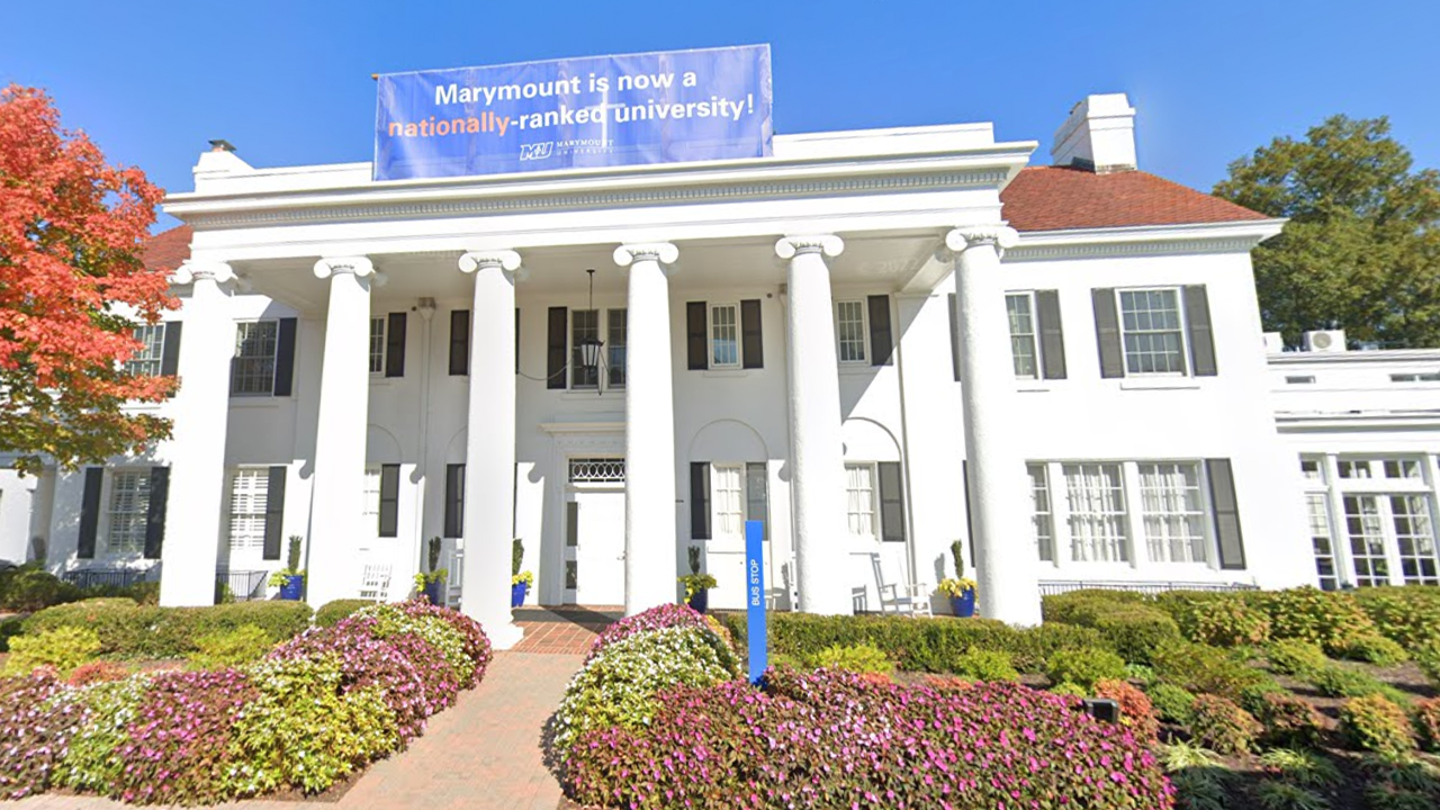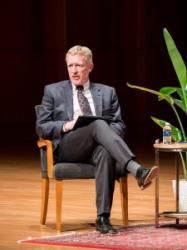Some years ago, only tangentially related to the reading we were doing in our seminar class, the students and I got into a conversation about jobs we found especially unappealing. I began with “guy who sprays de-icing chemicals on planes in the middle of winter from a cherry picker,” and the students quickly followed suit. A young man brought the conversation to a halt by mentioning a job we agreed, as he described it, would be as unpleasant as it gets (decorum prevents me from repeating).
As it happens, we lacked both imagination and experience, because it’s difficult to imagine a job in America worse than being president of a college. The tasks seem endless, the gratification slight, and the hassles overbearing. I didn’t enjoy interacting with a large percentage of my faculty colleagues on a good day, their combination of narcissism and ideology an unsavory mix. Imagine sitting in an office day after day listening to their carping and whining, complaining about being underpaid because they lack the math skills to calculate how their pay over a nine-month contract would extrapolate to a 12-month one. Not being responsible for decisions that get made, and not having to field the phone calls from angry donors and alumni, they feel free to tell the president what he’s doing wrong and, based on their experience of having run exactly nothing in their life, how things should really be run.
Even if you’re not capitulating to faculty pressure, you have to deal with the sprawling “student life” bureaucracy and the legitimate problems they have to deal with and the illegitimate headaches they cause on a daily basis. As mentioned, you have to deal with correspondence from angry donors and alumni, inquiries from the press, legal troubles, and reporting requirements for government and accreditation agencies. One has to wonder about the mental health of someone who agrees to do the job, both before and after they’re hired. Small wonder that the average tenure has shrunk to 6.5 years, with roughly 45% of presidents lasting four years or less.
Did I mention financial and enrollment pressures? Now we’re getting to the most difficult part. It’s been known for years that colleges are facing a “demographic cliff” that will start around 2025 and last until 2029. Schools will have ponds with 15% fewer fish they can catch, intensifying the competition between them, a competition made more difficult by the fact that colleges, by adopting “best practices,” look more and more alike. Many colleges won’t survive the competition. Some 861 of them have already closed their doors since 2004. The 2018–19 school year saw 236 shut down. Federal coronavirus funding made a good number of college spreadsheets look healthier than they actually were, especially since colleges cut their costs during the same period (but not their tuition). Clayton Christensen of Harvard Business School and guru of “disruptive innovation,” and no defender of the traditional liberal arts, has predicted that 50% of colleges are poised to fail by 2032.
With news that The King’s College in NYC probably won’t survive the semester, attention is drawn to the perils of a school that is circling the drain. You need donors to step up and give, but donors don’t want to give to something likely to fail. In the middle of this dilemma sits the college president, for whom duty and ego merge into one simple thought: “Don’t let this thing fail on my watch.”
Such thoughts incubate desperation, and desperation results in tacking away not only from what has made you successful in the past, but in many instances the thing that makes you genuinely distinctive. One of the striking things about Istanbul is walking across the Bosporus on one of the bridges and seeing fisherman standing shoulder to shoulder. The obvious question is “What makes you think the fish is going to take your bait, especially if it looks exactly like everyone else’s?” The same principle applies to colleges, and if you’re unwilling to change your bait, you start thinking about going after other fish. And if you can’t figure out any way to catch those fish without completely changing what you are, you’re going to have to be satisfied with eating less. Put another way, presidents become more concerned about preserving the institution than in preserving its mission, a sure sign they’ve lost their way. It’s like a library that wants to maintain the order of its stacks so desperately it refuses to loan out books.
But I’ve belabored the metaphor. The main strategy colleges have pursued in solving their demographic problem is to recruit international students, a strategy that forced many colleges to change their name from “college” to “university.” Desperate for male students—for the fact is that, not only are we at the leading edge of the effects of the birth dearth, but a smaller percentage of students in that cohort are choosing to go to college, and this is especially true of males, and there are pretty compelling reasons why—colleges might after 150 years decide that it’s time to play football. Permit me to doubt the claim that this will provide “big returns.”
My skepticism results from decades of watching colleges create a new program promising that it will bring in more students … overpromising and underdelivering. These programs seldom if ever match the guarantees of visionaries who are issuing promissory notes they don’t know they’ll ever be able to pay off. As a result, the colleges take on certain costs for uncertain rewards. Granted, that’s in the nature of any financial risk, but the track record of such gambits doesn’t inspire confidence.
In the meantime, having spent money lavishly when times were good, many colleges became bloated. More physical plant than they can maintain and more majors than there are students, colleges must begin the inevitable and painful process of cutting. That process, in turn, will typically be accomplished by applying a simple metric: how many students are majoring in that subject, and what are the program costs (the most consequential of which tends to be faculty salaries). Given that administrators are allergic to evaluating the relative significance of a given major and its central importance to the mission, and faculty will always be inclined to see their own discipline as the most important, cost becomes the measure. Questions concerning the historical importance of a discipline, its relationship to the school’s mission and identity, and its overall importance in the scheme of human searching and knowing will be set aside.
So it comes as no surprise when a Catholic college responds to the current crisis by gutting the courses central to the very idea of Catholic education. The reader may recall the seven liberal arts: rhetoric, grammar, logic (the trivium), and music, astronomy, arithmetic, geometry (the quadrivium). As the modern university developed with the creation of new fields of scientific investigation, the university system got fractured into multiple disciplines. Students now received instruction within narrowly defined disciplinary bounds, their own knowledge made incoherent by the disciplinary splintering. Cardinal Newman, concerned about what this meant both to the spiritual life of the students as well as the consequences for society, emphasized the need for Catholic schools in particular to elevate the only two disciplines that are integrative: philosophy and theology. No mind could be properly formed without this integration. Without instruction in these disciplines, Catholic education would cease to be education altogether, much less a Catholic one.
So one wonders what the committee at Marymount was thinking when they cut philosophy and theology out of their curriculum. Students, left with a grab bag filled with fragments of a tradition blown to pieces, will likely ask why they should pay money to attend Marymount when they can attend a state school that offers them the same education for a fraction of the price. One wonders what voices of protest, if any, were raised and on what basis they were silenced. One wonders how the school’s spokesperson, Nick Munson, looks at himself in the mirror in the morning after having said, with what I assume is a straight face and I hope is not a straight razor, that the decision was not financially driven but was simply about money. It would have not occurred to me to claim that the two things were unrelated, but then I’m not a university spokesperson. I’ll give him credit for admitting that the reason was “low enrollments.”
But even if programs such as these have fewer majors, they still serve a vital role in maintaining the college’s identity and also giving students some semblance of a serious education that is not simply training in various professions. This is especially the case if, as the article claims, all the classes are fully enrolled, even if students aren’t majoring in it.
We will have to take that on faith. I’d be inclined to see this as a courageous decision on the part of the committee if they had done so for this plausible reason, and one I have no idea is true in Marymount’s case: that many teachers in these subject areas don’t actually teach their disciplines. Literature professors are notorious for not only not teaching literature but also not even liking it. Philosophy professors are increasingly consumed with niche issues and don’t teach courses such as metaphysics or epistemology or historical surveys. Theology has been consumed by “religious studies,” with its specious assumptions about religious pluralism. In other words, the integrative disciplines have suffered their own internal disintegration, and a leading cause of this is that faculty, who own the curriculum, have structured curricula around their interests rather than serious questions about what students actually need to know.
This crisis in the humanities, their unwillingness to embrace the best of their own traditions, has rendered them vulnerable to budget cuts. They’ve made themselves superfluous and now they’re paying the price. This, too, points to a crisis in the university: Presidents either don’t pay attention to or don’t understand the importance of day-to-day operations such as faculty hiring, course content, and faculty accountability, and as a result schools are pulled away from their missions from within.
As I said, I do not envy these presidents the task of running these schools, and I certainly do not envy their having to operate in this environment, one that does not provide attractive options. I’ve long been critical of schools’ adopting consumer models to describe what they do, and to subjugate their purposes to career prep, but I’m inclined to ascribe current dire straits as a rational working out of market dynamics: When a service no longer demonstrates that it provides value to the purchaser, consumers will (reasonably) opt out of the market. We simply can’t have more colleges than we have students, and we can’t sustain economically nonviable ones.
Other college presidents should take note, however. Provide an actual education, one grounded in the search for truth and that inspires the heart as well as the mind and that holds out hope for something more than a decent paycheck. Provide an education where students walk out not only having actually learned something but also believing they’ve grown in knowledge, truth, and sophistication, realizing themselves as people who know things, and also know what they don’t know. Presidents should start with the question of what they want a typical graduate to look like, what kind of person they want these young people to be. And I can state for a fact that parents are no longer going to spend $60,000 a year to have their children turned against them; to have to sit across the Thanksgiving table from a tattooed, pierced, alienated, angry know-it-all who, in fact, knows very little.

